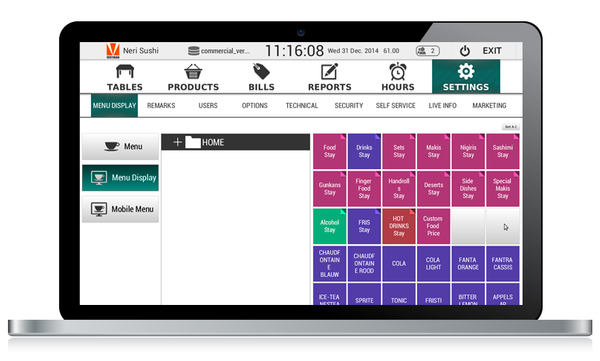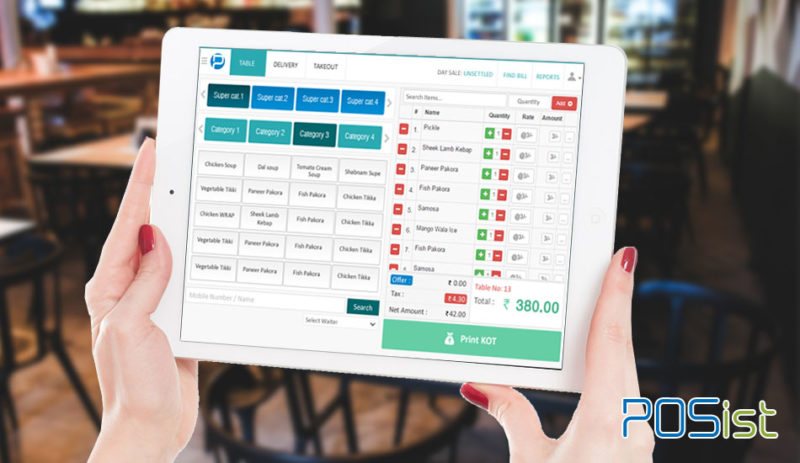How POS System Functions: A Comprehensive Overview for Organization Owners
A POS system acts as a necessary device for contemporary companies, integrating numerous parts to streamline procedures. It incorporates equipment like barcode scanners and software up for sale monitoring. This system not just processes transactions yet also takes care of stock and evaluates customer actions. Comprehending its functionality can significantly influence a service's efficiency and decision-making. What are the crucial elements that add to this efficiency? Exploring these parts provides beneficial insights.
Understanding the Parts of a POS System
A Point of Sale (POS) system is made up of a number of key elements that interact to facilitate purchases and manage organization operations. At its core, the equipment includes devices such as a sales register, barcode scanner, receipt printer, and repayment terminal, all crucial for processing sales (Restaurant POS Software). The software program element takes care of stock, sales monitoring, and consumer information, giving beneficial understandings for service decisions.Additionally, data sources store purchase documents and customer information, guaranteeing data honesty and safety and security. Network connection makes it possible for real-time updates and access to cloud-based solutions, improving functional effectiveness. Customer user interfaces, created for ease of usage, allow personnel to navigate the system promptly, reducing training time. Together, these elements develop a natural system that simplifies the sales procedure, enhances client service, and help in efficient monitoring of organization sources. Understanding these components is important for company owner looking for to maximize their POS systems
Just How Sales Deals Are Refined
When a consumer determines to make an acquisition, the sales purchase launches a collection of systematic actions within the POS system. The cashier inputs the items being purchased, which are checked with a barcode viewers or by hand gone into. This action retrieves item information, consisting of rates and applicable taxes, from the system's database.Next, the client is provided with the overall amount due. The POS system after that refines the payment, whether with money, charge card, or mobile repayment approaches. For electronic settlements, the POS safely interacts with payment cpus to authorize and confirm the transaction.Once the repayment is confirmed, the system produces an invoice, which can be printed or sent out digitally. This receipt functions as receipt for the customer. Ultimately, the transaction information is taped in the system, making certain precise sales documents and financial monitoring for business.
Inventory Monitoring and Tracking
Efficient supply management and tracking are vital parts of a POS system, as they guarantee that services keep ideal stock levels and reduce disparities. A robust POS system allows for real-time stock updates, showing sales and returns instantly. This enables entrepreneur to check stock levels precisely, making sure that preferred items are readily available while stopping overstocking of much less preferred products.Additionally, progressed POS systems offer features such as automated stock notifies and reorder tips, simplifying the purchase process. Barcoding and RFID innovation improve accuracy in tracking stock movement, decreasing human error. Comprehensive reporting tools offer insights right into supply turnover rates, aiding organizations make educated choices regarding buying and product offerings. Ultimately, effective inventory administration through a POS system not just boosts functional effectiveness but likewise improves customer fulfillment by making certain product availability.

Evaluating Client Data and Insights
Consumer information analysis offers as a powerful tool for companies utilizing a POS system. By gathering and examining deal data, organizations can discover important understandings concerning customer behavior and preferences. This analysis allows them to recognize acquiring fads, peak shopping times, and preferred items, thereby informing stock decisions and advertising and marketing strategies.Additionally, companies can section their client base, allowing for i thought about this customized advertising efforts that satisfy certain demographics or buying routines. Recognizing consumer commitment patterns likewise assists in establishing targeted promotions and incentives programs.The information amassed from a POS system can additionally disclose understandings into client comments, allowing services to make educated choices relating to item offerings and solution renovations. Inevitably, leveraging consumer information properly can improve the general buying experience, foster customer fulfillment, and drive profits growth.
Advantages of Executing a POS System
Executing a POS system provides numerous advantages that can considerably improve service operations. To start with, it streamlines purchase processes, minimizing delay times and improving client satisfaction. By automating sales processes, organizations can lessen human error and assurance exact record-keeping. Furthermore, a POS system gives useful information analytics, enabling owners to track sales patterns and supply levels in real-time. This insight sustains educated decision-making, helping to optimize stock administration and advertising strategies.Moreover, many POS systems integrate with other company devices, such as accountancy software program, streamlining financial administration. Improved worker management attributes, such as tracking hours and performance, further contribute to operational efficiency.Lastly, the implementation of a POS system can cause raised revenue through improved customer experiences and tactical insights, ultimately cultivating company development and sustainability.
Frequently Asked Inquiries
What Kinds Of Businesses Can Gain From a POS System?

Just how much Does a POS System Typically Expense?
The price of a POS system usually varies from a couple of hundred to numerous thousand dollars, relying on features, equipment, and software program - Restaurant POS Software. Businesses need to consider ongoing charges for upkeep, assistance, and transaction handling when budgeting

Can I Integrate a POS System With Existing Software?
Integrating a POS system with existing software program is usually feasible. Several systems supply APIs or built-in compatibility features, permitting services to improve operations and boost performance by connecting numerous go software application applications efficiently.
What Training Is Required for Team to Utilize a POS System?
Educating for team to utilize a POS system normally includes understanding software program functionalities, refining transactions, taking care of inventory, and taking care of client communications - Restaurant POS Software. Practical presentations and hands-on practice improve effectiveness and self-confidence in operation the system effectively
What Takes place if the Internet Drops While Using a POS System?
If the net goes down throughout POS system usage, purchases may be interrupted. Several systems provide offline capabilities, permitting basic Bonuses operations to proceed, but full capability, including real-time stock updates, will be limited.